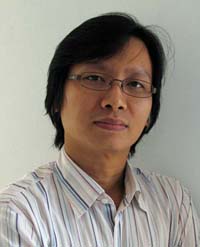The Drama of 2008
EVENTS in Burma during 2008 added up to a drama packed with mixed emotions. They began with an appalling disaster, arousing sympathy and anger, and ended with frustration as the year approached its end. Out of the drama, however, lessons can be learnt for the year ahead by all those involved, from the average Burmese citizen to national and international leaders, by organizations of all kinds, global and local alike.
 |
Kyaw Zwa Moe |
The international community responded with immediate offers of assistance, but governments and relief agencies hadn’t reckoned with the callousness of a suspicious regime, which at first barred aid organizations and workers from entering the country before eventually allowing them in under tight restrictions.
An angry but impotent world watched helplessly as the cyclone victims struggled to survive, neglected by their own government. Australian Prime Minister Kevin Rudd spoke for many world leaders when he said: “The Burmese regime is behaving appallingly.”
Even when US, British and French ships loaded with thousands of tons of relief supplies sailed to the region, the Burmese government banned them from landing emergency aid that would have saved an unknown number of lives. Frustration grew as helicopters sat on ships’ decks just half an hour flight from starving communities, and some foreign government members, led by French Foreign Minister Bernard Kouchner, called for the employment of a little-known UN principle, the “responsibility to protect” (known as “R2P”), allowing outside intervention in situations where a national government is unable or unwilling to protect its people.
While the world dithered, cyclone victims suffered and died, and finally the fleet of foreign relief ships withdrew and the regime was able to report that all had returned to “normalcy.” Faced with growing international pressure, the regime did, however, agree to allow relief flights to land, although tight restrictions were still imposed.
Much more important for the regime than the cyclone crisis was the smooth execution of its pet project—the national referendum on the draft constitution that had taken a convention of hand-picked delegates 14 years to draw up and which not even the worst natural disaster to hit the country in living memory was allowed to delay.
A UN demand for a review of the draft constitution by a special committee, to make sure it provided for an all-inclusive political process, was rejected by the regime. The result of the referendum was no surprise, and the outside world was asked to accept the absurd fiction that the draft constitution had been approved by more than 90 percent of the electorate.
Some consoled themselves with the belief that “something is better than nothing.” Burma has lacked a constitution for the past 20 years, after its second post-independence charter was revoked at the time of the 1988 national uprising, and it was certainly time for a new one.
Like it or not, the people of Burma will have to live for now with this constitution, which won’t be easy to review or amend. Its salient features are:
• The perpetuation of a leading political role for the military, with the commander in chief of the armed forces, currently the junta supremo Snr-Gen Than Shwe, entitled to fill 110 seats in the 440-seat parliament with appointees from the ranks of the armed forces. The commander in chief will occupy a political position on the same level as that of the two vice presidents. In the event of a “state of emergency,” which the military can declare at any time, the commander in chief will assume full legislative, executive and judicial powers.
• No role for opposition leader Aung San Suu Kyi and limited participation by other veteran politicians and activists.
1 | 2 | 3 next page »
- The UN’s Dangerous Detour
- Why the Generals are Winning
- A 'No' Vote Means 'Let's Have a Dialogue'
- Why Independent Media Matters in Burma
- Burma’s Sham Referendum
- New Approach Needed for Aid to Burma
- Who Lost the Most in the 2007 Uprising?
- Editorial_December 2007
- Editorial_November 2007
- Editorial_October 2007
